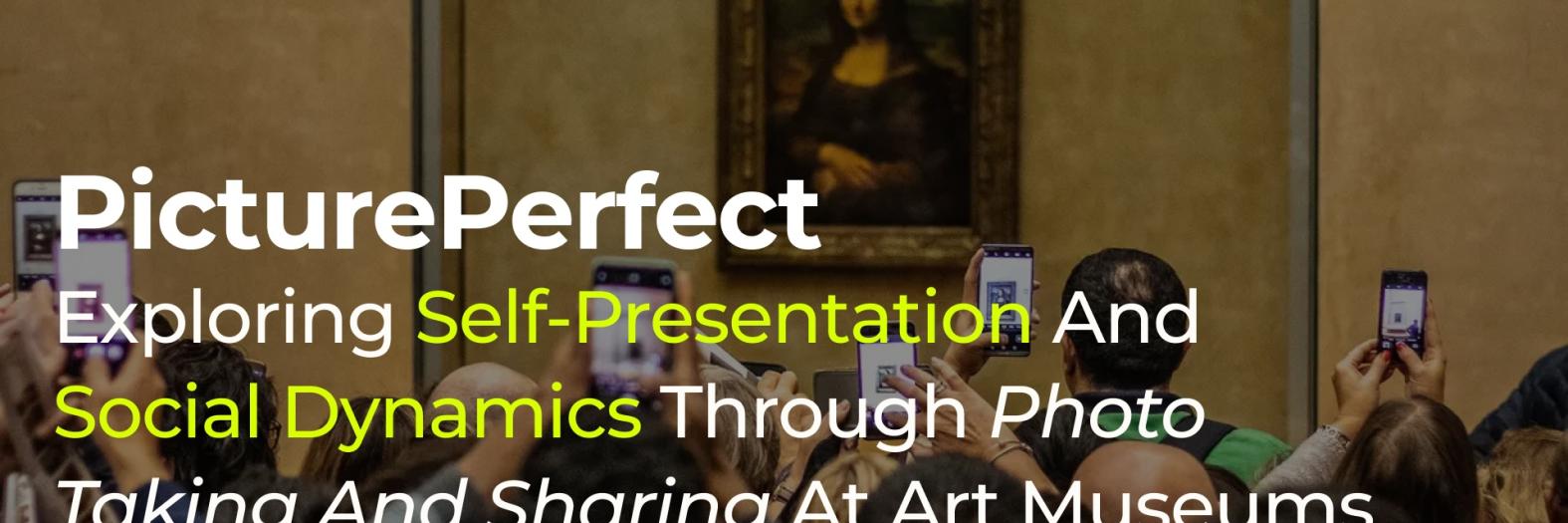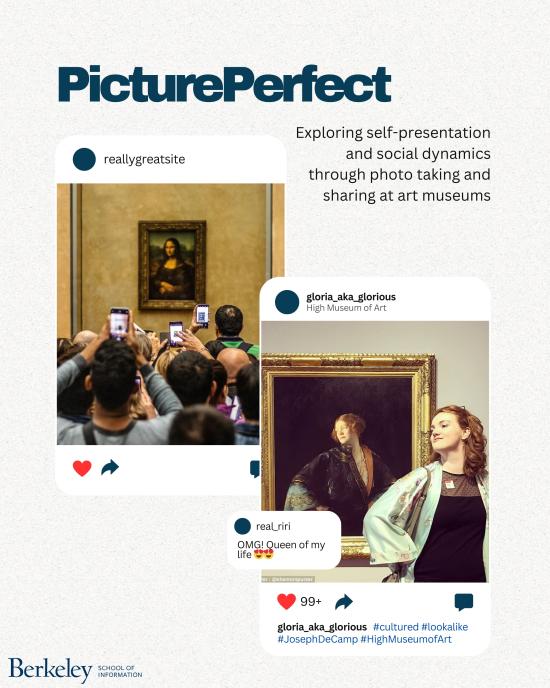PicturePerfect: Exploring self-presentation and social dynamics through photo taking and sharing at art museums
Problem Statement
This research project is guided by the question of how photo sharing on social media platforms after an art museum visit by visitors can influence their experiences during and after the visit. The diagram below describes the transition of our inquiries starting with this question and involves the examination of existing literature, semi-structured interviews, and data collection at the intersection of museum visitor experience, social psychology, and social media behaviors.
During the brainstorming phase of this research, we conducted a pilot observational study at the Berkeley Art Museum and Pacific Film Archive (BAMPFA). The results of this study enriched our understanding of the social aspect of art museum experiences. They also guided our further literature review in the direction of art museum visitors’ photo-taking activities, their photo-sharing behavior on social media platforms, and the social psychology theories behind their online expressions and interactions regarding art museum experiences.
In particular, we are interested in addressing the following questions:
- How are visitors taking pictures and sharing photos on social media after a museum visit?
- How are visitors experiencing the in-person visit mediated by their photo-taking? How does social media sharing affect the museum experience?
- How do people experience social relations while experiencing museums? How are social interactions mediated by photo-taking and social media sharing?
Based on the findings across all methods, we hope to provide design recommendations for initiatives, engagements, and integration that small-scale art museums can adopt to attract younger audiences, increase engagement during and post-visit, and enhance the experiences of visitors given the values that these institutions uphold.
We would like to discuss how the meanings of an art museum visit have evolved in the era of social media. For instance, they may no longer be simply about learning and viewing things. Is it necessary for art museums to adapt to these changes? If so, how might we make design recommendations to help art museums achieve this without hurting their fundamental values and purposes?
Key Activities
- Observational Studies: We have and will continue to conduct observational studies primarily at the BAMPFA as well as other art museums to identify the visitors’ behaviors and engagements with their digital devices and their photographing patterns. During our pilot observational study, we have also considered the differences in navigation and engagement patterns between solo visitors and those visiting in pairs and groups.
- Social Media Qualitative Coding: We will passively collect publicly available data (primarily photos, captions, and comments) from Instagram posts that have been tagged or associated with the museums under investigation. Then, we will carry out a detailed coding exercise to identify themes and patterns in the subject matter being photographed, the mood and tone of the photos and the captions, the level of interactions in the comments, the narratives associated with the overall post, and other aspects of the post.
- Semi-Structured Interviews: To further investigate the motivations and impact of photographing and photo sharing post-visit, we will recruit and conduct semi-structured interviews with art museum-goers and Instagram users to uncover their perspectives and tendencies.











